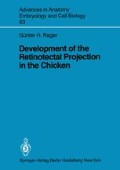Abstract
Wilhelm His, one of the founders of developmental neurobiology, was convinced “that the processes of generation and development obey fundamental and simple laws and submit to the general laws of nature”(His 1901). Therefore, we should be able to find immediate conditions, dependencies and rules determining the development of an organic form. With this in mind, His (1874) defined the task of embryology as follows: “Developmental biology is essentially a physiological science; it has not only to describe how each individual form develops from the egg, it has to derive this development in such a way that each developmental stage together with all its specialities appears as a necessary consequence of the immediately preceding stage ... Only if developmen tal biology has given a perfect physiological derivation for any given form, has it the right to say that it has explained this individual form.”The ultimate aim of a physiological derivation would be that laws of growth valid for organic beings can be expressed as mathematical formulae (His 1874). To exemplify this, he formulated a universal and purely formal law of growth in mathematical terms making the comment: “I now suggest that the body form follows immediately from germinal growth and can be derived from the given germinal form according to the laws of growth. My interest is, therefore, firstly to detect the law of growth empirically and secondly to derive consecutive forms of the developing organism by applying this law.”
Access this chapter
Tax calculation will be finalised at checkout
Purchases are for personal use only
Author information
Authors and Affiliations
Editor information
Editors and Affiliations
Rights and permissions
Copyright information
© 1980 Springer Verlag Berlin Heidelberg
About this chapter
Cite this chapter
Rager, G.H. (1980). Introduction. In: Rager, G.H. (eds) Development of the Retinotectal Projection in the Chicken. Advances in Anatomy, Embryology and Cell Biology, vol 63. Springer, Berlin, Heidelberg. https://doi.org/10.1007/978-3-642-67681-9_1
Download citation
DOI: https://doi.org/10.1007/978-3-642-67681-9_1
Publisher Name: Springer, Berlin, Heidelberg
Print ISBN: 978-3-540-10121-5
Online ISBN: 978-3-642-67681-9
eBook Packages: Springer Book Archive

